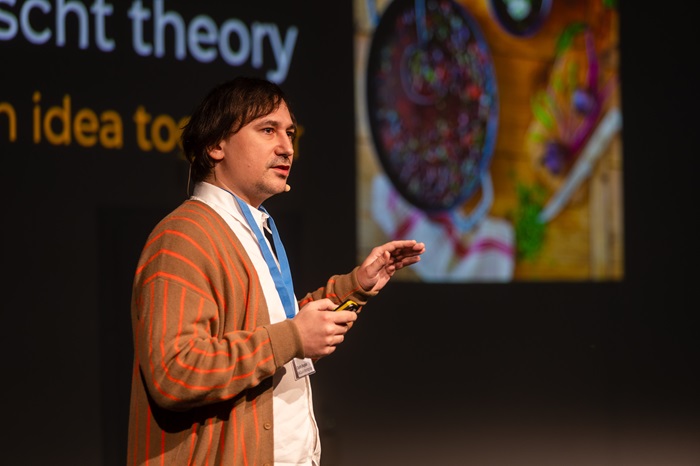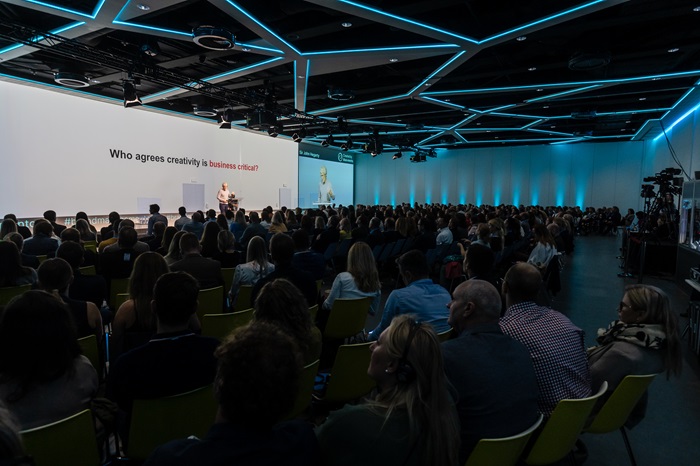"Married to Creativity" was the subtitle of this year's 10th annual Brand Management conference, which aims to bring different perspectives on the importance of brand building to business growth. It took place last week, thanks to organiser Blue Events.
Brand building helps reduce price sensitivity
Brand represents up to 32% of a company's total value, and its weight is gradually increasing. It's up two percentage points on last year alone, according to research cited in a post by Mary Kyriakidi, Global Thought Leader at Kantar. For some companies, the role of brand is even more significant, with Coca-Cola accounting for up to 90% of value at one point.
The power of the brand gives companies the ability to hold a higher price and allows them to have lower price elasticity. For example, the detergent brand Tide can defend its higher price to consumers and even withstand a direct price confrontation with a private label. "In fact, it offers enough benefits to customers to justify its premium price in their eyes, even some of them would be willing to pay more," Kyriakidi explained.
brand advertising also helps significantly with keeping the price set. Focusing on building the brand and its emotional dimension reduces price sensitivity, up to 1.5 times. An example of this is the feat of the Magnum brand, which fought very skilfully against its private label competitors with its advertising spot.
Source: Unilever
Data can fight pandemics
The power of data in brand building was demonstrated in his lecture by Jerzy Hołub, Vice President of Marketing and Communications Mastercard on the Polish, Czech and Slovak markets, with Costin Bogdan from McCann Worldgroup.
The two companies jointly responded, for example, to people's concern about too many crowds in stores during a pandemic, by creating a data-driven app that evaluated where it was safest to shop at what hours. They chose the Waze navigation system as their main communication channel, focusing on busy driving routes.
Source: Mastercard
However, the data also served to facilitate the inclusion of Ukrainian refugees, both at the beginning, when Mastercard helped them find accommodation and job opportunities through the Where to Settle app, and later, when the initial friendliness of the Poles started to turn more into hostility, as they began to see the new residents as competition. That's why Mastercard and McCann created the Room for Everyone platform, which shows how the synergies of certain deals can help drive more sales for everyone involved. Incidentally, the platform was also the basis for the brand's current advertising campaign in the Czech market, which will be taken up by Poland.
Source:Mastercard
Brands like to be disrespected
Sir John Hegarty, founder of agencies Saatchi & Saatchi and BHH, highlighted the contribution of creativity to business growth in his talk. He believes that every company that wants to move forward should strive for creativity. "We are all creative, not just the people in the agency. Creativity is the heart and soul of who we are, it's an expression of ourselves," John Hegarty elaborated.
A disrespect for values and established norms and the associated ability to make people question or challenge their competitors can serve to fuel creativity. However, it is not enough just to oppose, you need to be able to offer something new, as you have done in older advertising, for example the Xbox brand.
Agency and client must share expectations and goals
An insight into the relationship between the agency and the client or the director and his employees was provided by a segment entitled A Good Relationship to Creativity, which featured a presentation by couple therapist Petr Kačena, the head of design at Lasvit Mária Čulenov and the founder of the glass company Leon Jakimič.
Petr Kačena emphasized in his input that conflicts are needed in every relationship, and that in couples or collectives that do not argue sometimes, frustration just accumulates. "The crucial thing is how quickly both parties get out of the conflict. Argue and reconcile," he advised, adding that another condition for a healthy relationship is shared expectations and goals, as well as the harmony of the mind with the heart.
A long-term good working relationship was presented by Leon Jakimic with Maria Chulen, who has worked for Lasvit for 13 years. "We don't argue, but we debate a lot," Jakimic described, adding that the basic thing in the company is open communication about everything. According to Čulenová, it's also important that each of the 22 in-house designers has space to express themselves. "They can't all just submit to one brand style, that would kill everything," she added.
Brand Management 2024
 Source: Blue Events
Source: Blue EventsWhat are consumers saying and what is the reality
?
Hana Kloučková, managing director of Confess Research, showed the difference between what consumers say in surveys and their subconscious reaction and how to use this, for example, when communicating brand benefits or coming up with a slogan. What we claim in surveys is often distorted by our memory, post-rationalisation, trying to look more intelligent or just laziness. Confess Research uses a variety of neuroscience-based methods to measure subconscious responses such as skin surface tension or reaction time to certain questions and compares them to the conscious claims of respondents. It has used case studies of brands including Rohlik, Basket, AirBank, Zentiva and others to show gaps in consumer claims versus findings using neuroscience.
What's next for TV advertising?
Pavel Ctibor of Publicis reminded and showed with real data how the fragmentation of the media landscape is affecting long-used metrics on TV effectiveness. What may seem like a statistical error in the short term is actually a proven dramatic decline in the correlation between "share of voice" and mental accessibility. The result is that the same investment in TV advertising yields significantly less results. Ctibor sees the way out in cross-media planning and "attention planning".
The need for a change in the approach to TV campaigns was also confirmed by Lubica Mieres, marketing manager at Kofola. While in 2022 70% of Kofola's media investments went to TV, this year the ratio was reversed: the same amount went to other channels. Brand tracking has shown that Kofola is becoming more of a "retro" brand for the younger generation than a still relevant icon. Gen Z no longer identifies much with its concept of love. Kofola decided to go the way of events. It has teamed up with music festivals, where it has hosted weddings à la Las Vegas, a dating service, dance classes or podcasts about love in its fan zones. She launched a community outreach initiative that repaired hiking trails in the Czech Republic and Slovakia and partnered with influencers and podcasters. Her ambition was to create real experiences outside the digital environment.
Pathways to Young Consumers
The KitKat brand also targeted the young and tried the online route instead. The aim was to improve its position from 15th place among chocolate bars in 2015, when 70% of sales were the Chunky format, to biting off a decent share of the category and above half the sales of the iconic "four finger" format. E-sports at a professional and hobby level, pre-testing all content on social media and a "top of mind obsession" with brand building. This was the recipe for success according to Stanislava Ruzicka, head of confectionery marketing at Nestlé for the CEE region. Currently, KitKat ranks 2nd in its category, which represents one bar eaten every 1.7 seconds in the Czech and Slovak market.
Similar sales growth figures were presented by Proud brand manager Jakub Marek, part of Plzeňský Prazdroj. And with KitKat, this case study is also linked to determination and commensurate investment in support. The starting point was the realisation that one million hectolitres of beer had dropped off the market since 2018. Young people in particular are moving away from drinking it. Prazdroj decided to come up with a modern novelty of Czech provenance, because although younger generations are not fond of beer, they are also loyal to Czech brands. The different positioning is reflected in the taste, modern on-trade ventures and focus on open air events.
Jakub Marek said that the marketing budget for this innovation was comparable to that of Pilsner and at the time of deployment represented 10% of the investment in the entire beer category. "The important thing was to believe in ourselves, to go for it, even if we didn't have everything 100% fine-tuned right away, and to learn quickly," Marek summed up his contribution, adding that betting on so-called light users can pay off with a well-thought-out strategy.
Source: mediaguru.cz

